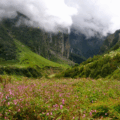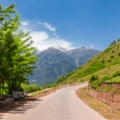Travelling to Kashmir in May and June: A Complete Guide
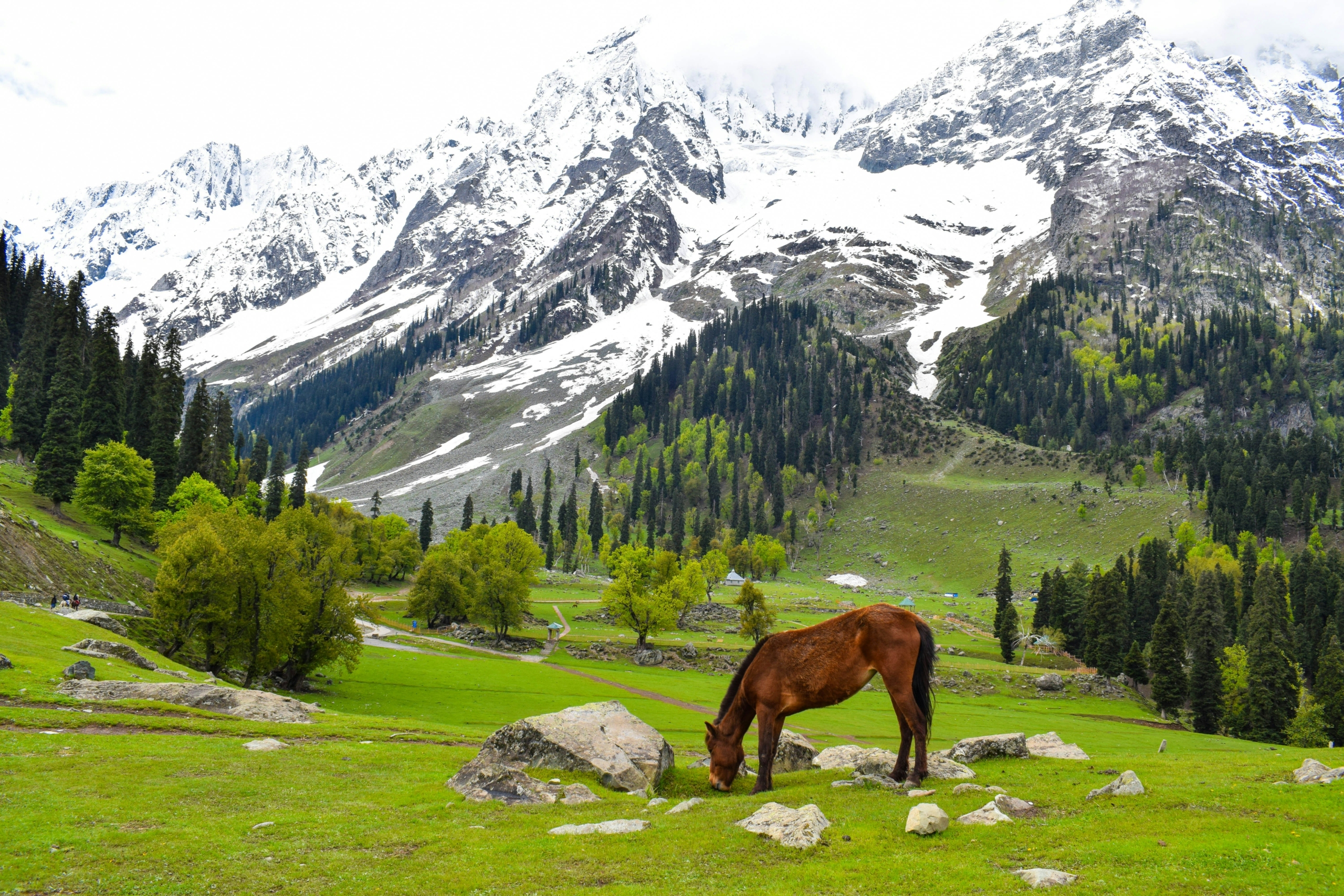
Editor’s Note: In light of the recent tragic incident in Pahalgam, we strongly advise travellers to pause all non-essential travel plans to Kashmir until further notice. We recommend staying updated through official government advisories and news sources before planning or continuing your journey to the region.
Glorious all around the year, it’s not hard to imagine why a trip to Kashmir has made its way to all of our bucket lists. It’s a magnet for romantic adventure lovers who come to explore magical landscapes via a tangle of hiking paths (including the Kashmir Great Lakes Trek). During summers, Kashmir tourism is in full bloom: vibrant tulip gardens in Srinagar, snow-clad mountains starting to unveil their slopes, and the entire region seems to bask in the glory of rejuvenation. Travelling to Kashmir between May and June encapsulates this dynamic transformation, offering travellers a spectacle of nature’s magnificence.
From the scenic Srinagar to Pahalgam distance, to the adventurous Kashmir Great Lakes Trek, there is something for everyone. Whether you want to witness snow in Kashmir or explore the beauty of the north in summer, here’s a guide to provide you with all the necessary information for travelling to Kashmir in May and June.
In this Blog
Planning Your Kashmir Trip
Embarking on a journey to Kashmir requires meticulous orchestration. Considerations such as securing homestays in Kashmir and outlining a trip itinerary are paramount. Procuring the necessary permits, especially if you intend to visit areas like Gulmarg or Pahalgam, is essential. Furthermore, aligning your travel plans with local festivals and events in Kashmir can significantly enhance your cultural experience in the region.
Choosing the Perfect Kashmir Trip Itinerary
Select an itinerary for Kashmir that balances leisure with exploration—embracing the serene landscapes and the vibrant local culture of Kashmir.
When selecting your travel schedule, incorporate experiences that delve into the cultural fabric, such as Sufi music evenings or local handicraft exhibits, along with visits to iconic saffron and tulip fields, tranquil lakes and other popular Kashmir tourist places.
Conclude with destinations that offer respite and reflection—Pahalgam’s alpine vistas or the serene gardens of Srinagar—ensuring a harmonious blend of excitement and tranquillity.
Trip to Kashmir with family? Book a private homestay!
Securing your accommodation and transportation in advance is paramount for a stress-free stay in Kashmir during the peak months of May and June.
- Choose homestays, houseboats and cottages that provide comprehensive services, including travel assistance.
- Engage with accredited travel agencies for reliable car rentals.
- Consider booking flights to Srinagar Airport well in advance to avail competitive fares.
- Opt homestays in Kashmir that offer complete privacy while being centrally located for easier access to key tourist spots in Kashmir.
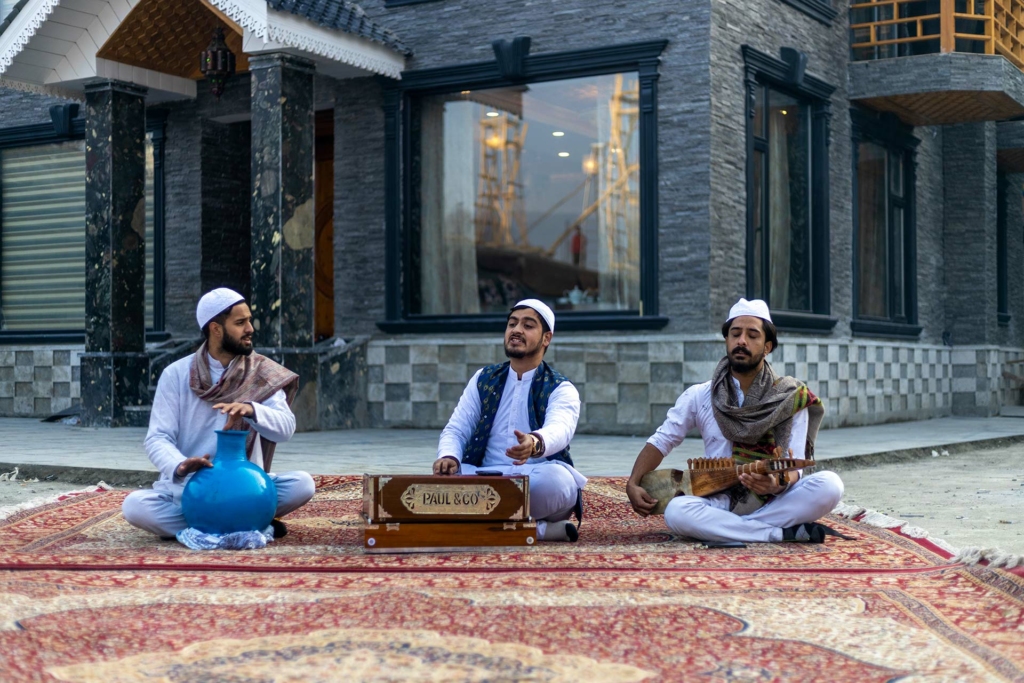
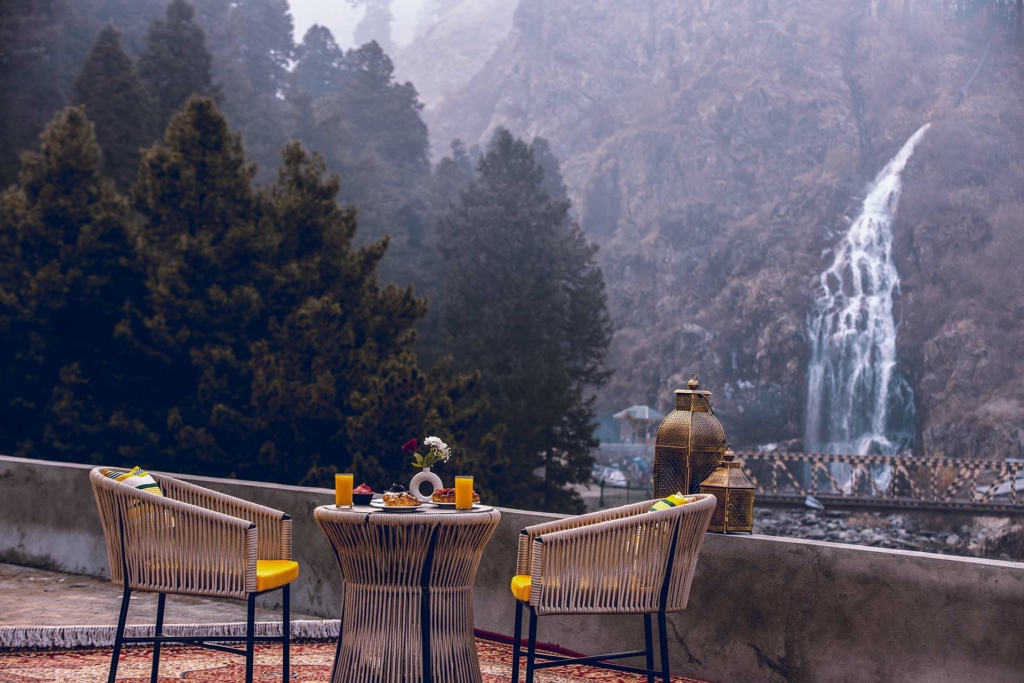

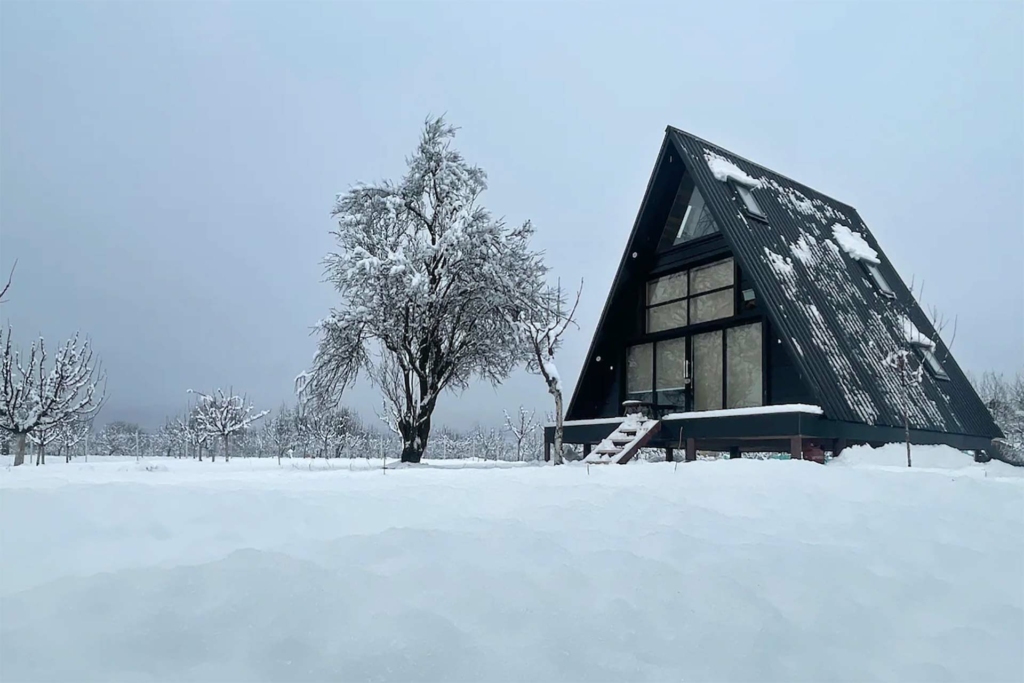
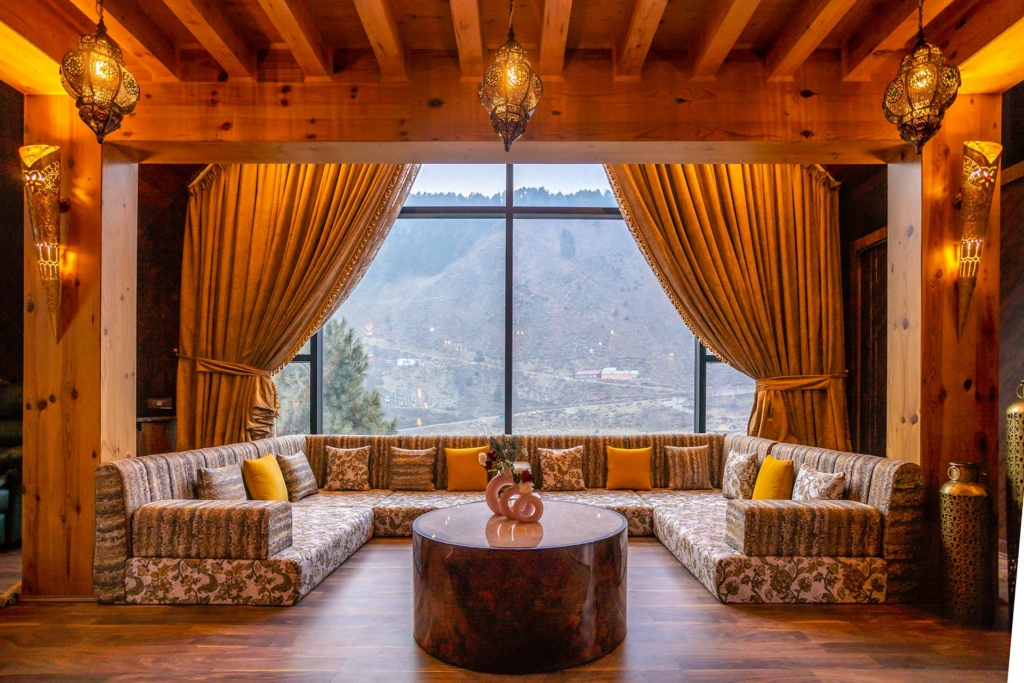
Understanding the Weather in Kashmir in May & June
Kashmir’s climate in May and June is a vibrant tapestry, balancing between the tail end of spring and the onset of summer.
- May: Temperatures range between 14°C to 21°C, lending to a crisp freshness in the air.
- Rain: Slight chance of rain, necessitating light waterproof clothing.
- June: Warmer with temperatures climbing up to 15°C – 30°C.
- Altitude: Higher altitudes may experience cooler temperatures and sporadic rainfall.
- Daylight: Longer days provide ample time for sightseeing and activities.
For tourists, this translates into a period of comfortable weather, ideal for outdoor pursuits. Pack for cool evenings and warmer days, and always include contingency for rain.
Best Time to Visit Kashmir
Oftentimes, the months of May and June are heralded as the pinnacle of travel season in Kashmir.
The summer months, particularly May and June, are considered the best time to visit Kashmir for several reasons. Firstly, during this time, the valley transforms into a paradise of vibrant colours, with the tulip fields in full bloom. These fields create a mesmerising sight, with rows upon rows of tulips in various hues, adding to the ethereal beauty of the region.
Additionally, the weather in Kashmir during the summer months is temperate and pleasant, making it ideal for outdoor activities and exploration. The clear blue skies and verdant landscapes provide a picturesque backdrop for activities such as trekking, shikara rides on Dal Lake, and visiting the Mughal Gardens.
Moreover, May and June witness the beauty of Kashmir without the inconvenience of heavy rainfall making it a relatively dry period for travel.
Must-Visit Destinations in Kashmir
Synonymous with paradise, Srinagar is an essential stop in the Kashmiri tapestry, home of the majestic Dal Lake and Shankaracharya Temple. Adding to this mosaic of tourist attractions are the verdant Mughal Gardens.
Venturing further north, the town of Gulmarg presents itself as a “meadow of flowers”. Amidst its expenses, the Gulmarg Gondola transports one to the Apharwat Peak – offering a vantage point that unveils the panorama of snow-draped mountains. Pahalgam, another gem, unfolds a canvas of saffron fields and tranquil rivers, which are sure to captivate the senses. Here, the Betaab Valley and Aru Valley call forth to the adventurous spirit within.
Srinagar’s Serene Lakes and Gardens
Srinagar, with its tranquil lakes and exquisite gardens, stands as a testament to nature’s splendour and meticulous craftsmanship.
- Dal Lake – Iconic for its stationary houseboats and shikaras.
- Nigeen Lake – A quieter, yet equally mesmerising, counterpart to Dal Lake.
- Shalimar Bagh – A quintessence of Mughal horticulture, with terraced lawns and cascading fountains.
- Nishat Bagh – Known as the ‘Garden of Bliss’, offering splendid views of the lake and the Zabarwan hills.
- Chashme Shahi – Famed for its royal spring and terraced structure.
- Pari Mahal – The abode of fairies, sitting atop Zabarwan mountain range, overlooking Dal Lake.
- Harwan Garden – A vast garden known for its natural beauty and large water reservoir.
An evening Shikara ride on Dal Lake is an epitome of serenity that should not be missed.
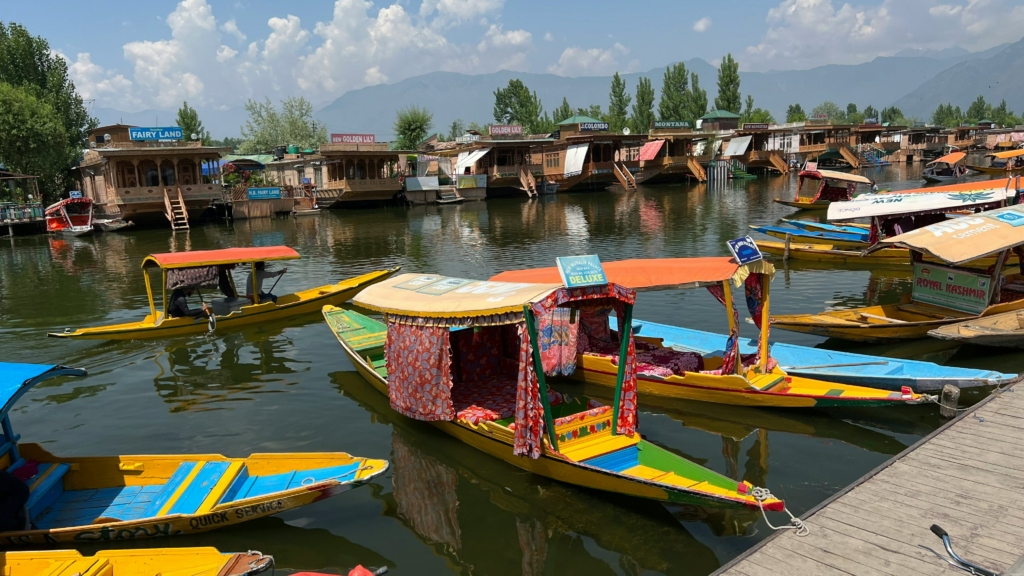
Gulmarg’s Scenic Meadows and Adventure
Gulmarg in May and June presents an idyllic tableau of pastoral beauty, with lush meadows beneath pristine skies.
- Gondola Ride – Asia’s highest and longest cable car project ascends to Apharwat Peak.
- Golfing – Engage in a round of golf at the world’s highest green golf course.
- Trekking – Traverse the verdant trails leading to Alpather Lake amidst snow-capped peaks.
- Skiing and Snowboarding – Even in late spring, certain slopes offer a winter sports experience.
- Pony Rides – Relish the landscape’s charm on a leisurely pony ride.
- Photography – Capture the unsullied vistas that are a visual retreat for shutterbugs.
This destination is a haven for adventure and nature enthusiasts alike.
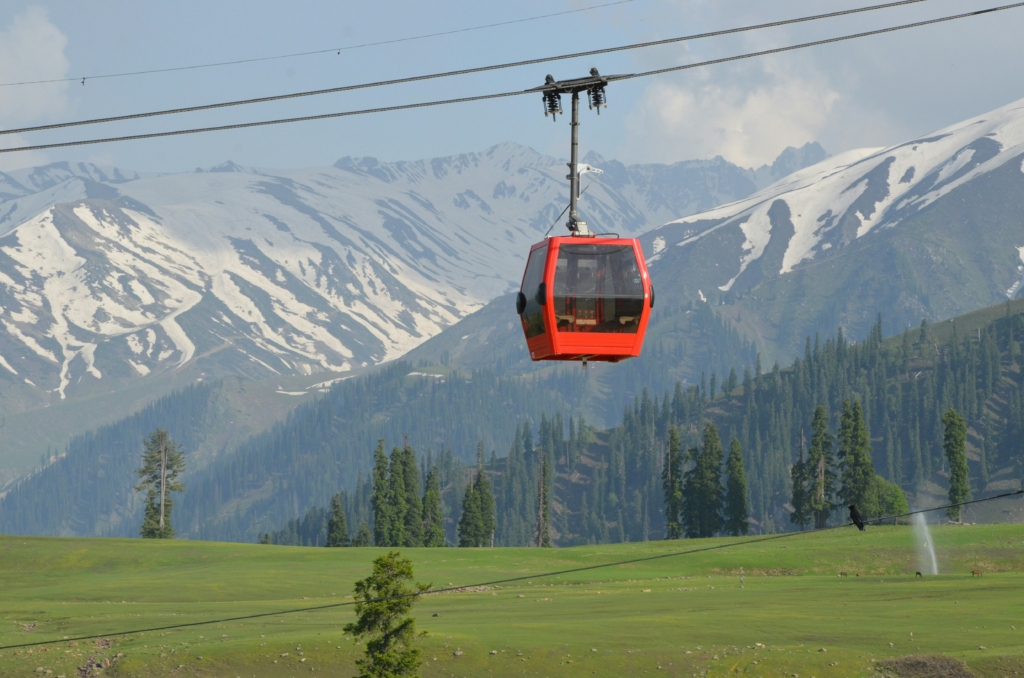
Pahalgam’s Untouched Beauty
Pahalgam’s allure lies in its tranquil ambience and raw natural charm. The region boasts a landscape that can only be described as a painter’s muse. With the Lidder River serenely meandering through lush green valleys, Pahalgam epitomises untouched serene beauty, offering a spellbinding escape from the cacophony of city life. From the soft murmur of the river to the majestic pines standing guard, every corner of Pahalgam whispers tales of nature’s splendour. The diverse flora and fauna add vivid strokes to this picturesque canvas, making it a paradise for those seeking solace in nature’s lap.
As you explore deeper, you’ll discover Pahalgam’s hidden jewels, like the mesmerising Betaab Valley, named after the Bollywood film that showcased its splendour. This valley, enveloped by lush meadows and snow-capped peaks, presents a perfect setting for picnics and leisurely strolls. Photographers and nature lovers find themselves lost in its enigmatic beauty, which retains its pristine essence.
Adventure enthusiasts revel in the opportunity to traverse the undulating landscapes of Pahalgam. With activities like river rafting on the Lidder, trekking to the ancient Sheshnag Lake, and camping under the clear night sky, Pahalgam is an eminent destination that combines adrenalizing pursuits with tranquil moments of repose.
There’s something truly magical about visiting Pahalgam in May and June. The bloom of vibrant wildflowers against the melting snow offers a magnificent spectacle, validating Pahalgam’s status as Kashmir’s untouched gem.
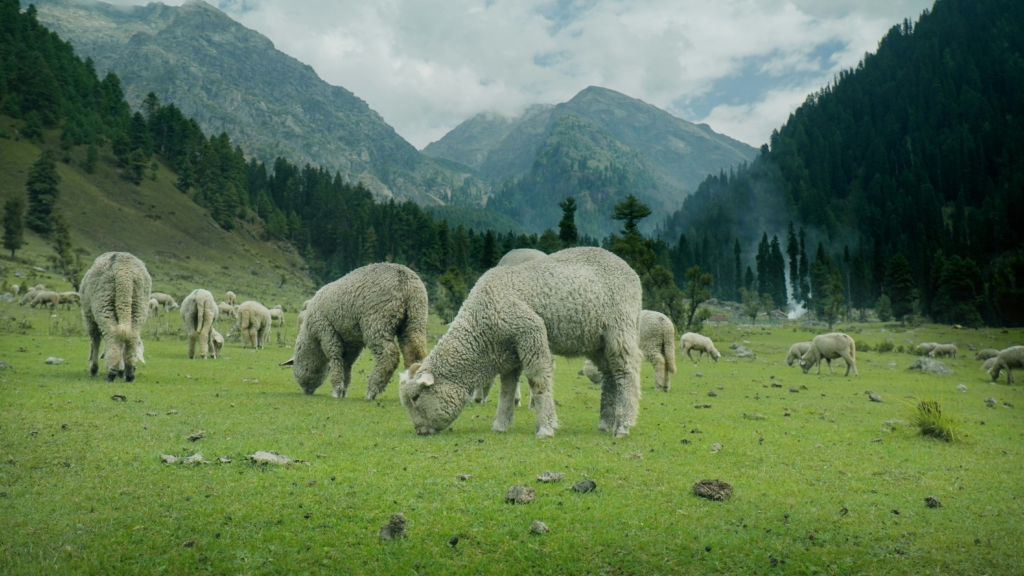
Cultural Insights and Experiences of Kashmir
From the symphony of Sufi music to the aroma of traditional Wazwan cuisine, exploring the sensory indulgences set against the backdrop of snow draped panoramic vistas makes for an authentic and unforgettable Kashmiri experience.
Must-Try Traditional Food of Kashmir
Kashmir’s traditional feasts, known as Wazwan, is a culinary rite that weaves history, culture, and communal harmony into an experience of delicately spiced dishes. The Wazwan is reflective of the region’s opulent culinary heritage, showcasing preparations that demand rigorous dedication—36 courses or more make up this lavish spread. Prominent among the offerings is Rogan Josh, Gustaba, and the subtly spiced Nader Monje.
For vegetarian offerings, Dum Aloo and Chaman—fried paneer are exotic gustatory delights. Conclude this experience with the ceremonious Kong Posh Kahwa, a saffron-infused green tea.
Handicrafts and Shopping in Kashmir
The artisanal journey of Kashmir is woven into every handcrafted item, making each piece not just a purchase but an heirloom. From the exquisite Kashmiri Pashmina shawls to the intricately carved walnut wood pieces, these artefacts are a testament to this region’s history.
Kashmir’s famous Pashmina remains unparalleled in softness and warmth. The delicate craftsmanship behind these luxurious shawls reflects the valley’s deep-rooted artistic heritage. Stepping into the bustling bazaars, one is greeted by vibrant hues of handwoven carpets and the soft texture of traditional Kashmiri clothing.
Local Events and Festivals of Kashmir
The illustrious Tulip Festival in Srinagar is a harbinger of spring, typically observed in April, but its resonances reverberate well into May. Visitors are greeted by a visual symphony of over a million blooms, spread across the expanse of the Indira Gandhi Memorial Tulip Garden. It is an idyllic backdrop for the celebration of nature’s bounty, combined with a melange of cultural events of local music, cuisine, and handicraft exhibitions.
Another event of significance is the vibrant Kheer Bhawani Mela, held in the compound of the Kheer Bhawani temple in Tullamulla. Devotees assemble to pay homage to the Goddess Ragnya Devi. The festival is a profound reflection of Kashmir’s composite cultural ethos, as it sees participation from various communities, reinforcing the idea of enduring pluralism.
5 Best things to do in Kashmir
- Immerse in the tranquil beauty of Dal Lake by taking a Shikara ride amid the serene waters and majestic mountains.
- Engage in trekking adventures in the Great Himalayas, particularly the serene trails around Sonmarg, known for mesmerising views and verdant settings.
- Savour the unique blend of culture and horticulture by visiting the Mughal Gardens, with Shalimar Bagh offering a historical aura encased in nature’s splendour.
- Witness the vivid tapestry of local craftsmanship at the bustling markets of Srinagar, where exquisite Pashmina shawls and intricately carved walnut wood pieces beckon connoisseurs and laymen alike.
- Experience the spiritual resonance of Hazratbal Shrine, holding the revered relic of Prophet Muhammad, which radiates peace and piety across the valley.
Tips for a Safe Journey to Kashmir
As you plan a trip to Kashmir, be meticulous in acquiring the mandatory travel permits, especially when venturing into ecologically sensitive zones which necessitate stringent approval processes.
Ensure registration with local authorities on arrival to avoid any contravention of regional protocols or inadvertent legal infractions.
Certain areas within Kashmir fall under protected or restricted areas for which Inner Line Permits (resembling border passes for domestic frontiers) must be procured.
While most tourist attractions are accessible, areas proximate to international borders demand special permits due to security concerns and geopolitical sensitivities.
Prior to departure, verify the status of areas under restrictive orders such as curfews or movement constraints, which are primarily promulgated in response to sporadic geopolitical tensions.
Travel tips for getting around Kashmir
Car rental in Kashmir is the most practical and flexible way of enjoying a vacation in Kashmir. Dedicated drivers provide invaluable insight into local areas of interest.
State-run and private buses are economical but less convenient for distant or off-beat locations. They operate on major routes and have fixed schedules.
For an authentic experience, shikaras in Srinagar and gondola rides in Gulmarg offer picturesque views of lakes and valleys, while auto-rickshaws and taxis serve for short distances within towns. Ensure the fare is discussed upfront to avoid discrepancies later.
The regional airports at Srinagar and Jammu connect Kashmir to other parts of India. From these points, an extensive network of roadways leads to prime destinations. Always have alternative travel plans due to the unpredictability of mountain weather, as it often affects road accessibility and conditions.
So, pack your bags and get ready for an unforgettable trip to Kashmir with family!



